Simple Trini tamarind "tambran" sauce recipe
29.5.15
| Recipe by Renz
A tangy, sweet, and sour sauce, this tamarind sauce is one of the winning
condiments for a lot of our street foods. This easy-to-make recipe can have you
dipping in no time.
This post contains affiliate links. Please read my full disclosure here. As an Amazon Associate, I earn from qualifying purchases.
It's Friday guys. Another week is done and now for the weekend.
Today's post is all about how to make tamarind sauce. A condiment I am most addicted to. One of the champions of sauces in Trinidad and Tobago.
Trini Tamarind sauce, or as we say "tambran sauce", uses fresh tamarind pods and simmers it down with seasonings and sugar. Some people might also refer to it as Tamarind chutney.
This savory sauce is very multi-purpose, just like our other condiments like cucumber chutney, chadon beni sauce, mango sour, and pineapple chutney.
You will want to try this sauce on everything since it does add some great flavor to food. And you don't even need to use a lot of it.
Tamarind, known for its tangy and sour flavor, is a popular ingredient used in many cuisines around the world. It is a fruit that grows on the tamarind tree and is also widely used in Indian and Asian dishes.
It has a unique taste that adds depth and complexity to a variety of dishes. It can be found in different forms such as tamarind pulp, tamarind paste, and tamarind concentrate. Whether it is used in a sweet tamarind chutney, a savory tamarind sauce, tamarind balls, or even some tamarind juice, the flavor of tamarind is sure to elevate any dish it is added to.
It's important to get some good tamarind pods for this.
When it comes to picking the best tamarind, there are a few important factors to consider.
If you have access to an Asian grocery or an Indian grocery store, you may be able to find tamarind paste or concentrate, which is a convenient option if fresh tamarind is not available. However, if you can find fresh tamarind, it is worth the extra effort as the flavor is unmatched. With these tips in mind, you'll be sure to pick the best tamarind for your delicious sauce or chutney.
Besides getting the fruit itself, everything else listed is pretty basic things that most people have in their pantry.
Creating tamarind chutney requires some simple steps.
If you get with the shell on, we need to remove that outer shell. Try to just crack the shell in as minimal places as possible. Remove the casing and the stringy things that are attached.
Examine the pieces and remove any small pieces of shell that might be stuck on there. You can run it under some water to help remove it.
Once removed, add it to a heavy-bottomed pot and add your water. Mix them, then bring the water to a boil on medium-high heat, then lower it to a low boil.
Stir occasionally, and press down on the tamarind while stirring to help remove more of the flesh from the pod. You can also use a potato masher to do the separation.
Once the "meat" disintegrates to a consistency you like and then you remove the tamarind seeds and any membranes you may have missed in cleaning. You can do this in another medium bowl. See tips on how I use two spoons to separate seeds from the pulp.
Using a mortar and pestle, mash together the pepper, garlic, and chadon beni. I cut them up to start to make it easier. If you want more heat in your sauce, include the seeds of the pepper. You can also use a food processor.
Once the seeds are removed, add spices and sugar to the tamarind mixture and combine.
Tambran is a very tart fruit and the sourness may vary depending on the batch you get. Adjustments would have to be made to your taste buds. Adjust to the right taste you want by adding more hot water or sugar.
Transfer to a clean sterilized container when cooled.
Simmer the sauce until it is thick and flavorful: If you find that the sauce is too thick, then you can just add more warm water to get a thinner sauce. Start with a little at a time. But if your sauce is too thin, then you can put it back on the stove on a low boil till it gets to the consistency you prefer.
I also do not add all my water at once. Start by adding about half the water. Or enough water so that it is the same level as the pulp. Bring that to a boil and then to simmer. When that starts to thicken up as the pulp separates, add more water to loosen the consistency.
Soak the tamarind in hot water for at least 30 minutes. This is a tip I got after making this for a while. Soaking the tamarind before working on it helps to soften the tamarind and make it easier to extract the pulp.
Easy way to remove seeds: I use a slotted spoon and a regular spoon. I scoop up some contents with the slotted spoon, then use the other spoon to press down to push the rest of the flesh back into the bowl. You can also use a think mesh sieve or cheesecloth, but I find that makes a lot of mess. If you are lucky, you can also use some seedless tamarind instead.
I don't have culantro/chadon beni: Then you can use cilantro. Just double the amount since the flavor is not as intense. You can also leave it out but will definitely be missed.
I have a lot of shells stuck onto the tamarind pulp: This happens when you squeeze the shell to crack it. Don't squeeze it too much. You can even use a spoon to hit the shell to crack it then peel it off. This makes for less work later down to remove small pieces.
I need a large batch of sauce: This recipe can easily be doubled or tripled to create more.
I need more spices: Then try adding some additional spice powders to the sauce. You can try using ground ginger or grated fresh ginger, ground cumin, chili powder
After making the perfect sauce we want to make sure that we preserve it for as long as we can. Unlike store-bought tamarind sauce, the shelf life of this is not as long without proper precautions.
Ensure that the sauce is cooled all the way down before storing. It needs to be put into a clean glass jar with a tight sealing cover. My go-to is mason jars to hold my condiments. My fridge has mango chutney in it for those days.
Once packaged, store it in the fridge. It's great to have handy for whenever I whip up something really good.
This lasts for about a good 3 months with good care. Make sure to use a dry spoon to serve. Don't use a wet spoon or a dirty spoon to dip out some sauce. And always make sure you close the container lid tightly.
When it comes to tamarind options, you have a few choices to consider.
The first option is using fresh tamarind pods as this recipe guides you to.
Another option is using tamarind pulp, which is available in many grocery stores. To prepare the pulp, soak it in warm water for about 30 minutes, then strain it to remove any fibers or seeds. This pulp can be directly used to make the sauce.
Alternatively, you can use tamarind concentrate, which is a more concentrated form of tamarind pulp. Simply mix the concentrate with water according to the package instructions to create the tamarind mixture for your sauce.
Regardless of which tamarind option you choose, the process of making the sauce largely remains the same. Take the tamarind mixture and combine it with water, sugar, and spices.
As I mentioned this can be used as a dipping sauce, or as a serving sauce.
It complements a good pholourie or accra. And a great serving sauce with some doubles, aloo pies, or even roasted chicken.
And don't forget wings. Ever had some delicious tamarind wings?
Let me know in the comments. And if you have used this recipe please give me a star rating below in the recipe card.
This post contains affiliate links. Please read my full disclosure here. As an Amazon Associate, I earn from qualifying purchases.
It's Friday guys. Another week is done and now for the weekend.
Today's post is all about how to make tamarind sauce. A condiment I am most addicted to. One of the champions of sauces in Trinidad and Tobago.
Trini Tamarind sauce, or as we say "tambran sauce", uses fresh tamarind pods and simmers it down with seasonings and sugar. Some people might also refer to it as Tamarind chutney.
This savory sauce is very multi-purpose, just like our other condiments like cucumber chutney, chadon beni sauce, mango sour, and pineapple chutney.
You will want to try this sauce on everything since it does add some great flavor to food. And you don't even need to use a lot of it.
What is tamarind?
Tamarind, known for its tangy and sour flavor, is a popular ingredient used in many cuisines around the world. It is a fruit that grows on the tamarind tree and is also widely used in Indian and Asian dishes.
It has a unique taste that adds depth and complexity to a variety of dishes. It can be found in different forms such as tamarind pulp, tamarind paste, and tamarind concentrate. Whether it is used in a sweet tamarind chutney, a savory tamarind sauce, tamarind balls, or even some tamarind juice, the flavor of tamarind is sure to elevate any dish it is added to.
How to select the best tamarind
It's important to get some good tamarind pods for this.
When it comes to picking the best tamarind, there are a few important factors to consider.
- Firstly, look for tamarind that is fresh and plump, with shiny and smooth skin. Avoid any tamarind pods that have blemishes, bruises, or dry, cracked skin.
- You might see people mention sweet tamarinds versus sour. This just depends on what stage the fruit has been picked. The young, less ripe version is sour while the more mature ones are sweeter and less sour. Ones at either stage work. Another tip is to go for tamarind that has a sweet aroma, as this indicates its freshness and good quality
- If picking these fresh from a tree, try to find ones whose shell hasn't cracked and allowed moisture to get inside. These can start molding and can ruin your mixture.
- If no access to a tamarind tree, you can find the fruit at the Caribbean, Asian, Indian, and Latin American stores. They are sold in boxes or packets.
If you have access to an Asian grocery or an Indian grocery store, you may be able to find tamarind paste or concentrate, which is a convenient option if fresh tamarind is not available. However, if you can find fresh tamarind, it is worth the extra effort as the flavor is unmatched. With these tips in mind, you'll be sure to pick the best tamarind for your delicious sauce or chutney.
What does Trini tamarind sauce contain?
Besides getting the fruit itself, everything else listed is pretty basic things that most people have in their pantry.
To get the best results, try to use as fresh of produce as you possibly
can.
- Tamarind fruit - you can get it with or without the shell. You might also find some seedless tamarind, that can also be used.
- Sugar - You'll need some sweetness to balance out the tartness of the tamarind. Brown sugar is commonly used, but you can also opt for alternatives like jaggery powder or palm sugar for a unique twist. The sweetness not only complements the sour taste of the tamarind but also helps to thicken the sauce as it cooks.
- Scotch bonnet pepper - The pepper is a crucial ingredient in tamarind sauce, as it adds both heat and flavor to the dish. This small, fiery pepper originates from the Caribbean and is known for its intense spiciness. you can also use any other hot pepper you have. If you want it extremely hot you can include the seeds and membrane.
- Garlic cloves - To elevate the flavors of your tamarind sauce, don't forget to incorporate cloves of garlic into the mixture. Garlic adds a delicious savory kick that complements the tangy and sweet notes of the tamarind.
- Chadon Beni - Incorporating leaves of chadon beni into the tamarind sauce elevates the dish, providing a delightful combination of tangy, sweet, and savory notes. The aromatic qualities of chadon beni not only enhance the taste of the sauce but also make it more appetizing and enticing.
Equipment (These are affiliate links):
How do you make tamarind sauce from scratch?
Creating tamarind chutney requires some simple steps.
If you get with the shell on, we need to remove that outer shell. Try to just crack the shell in as minimal places as possible. Remove the casing and the stringy things that are attached.
Examine the pieces and remove any small pieces of shell that might be stuck on there. You can run it under some water to help remove it.
Once removed, add it to a heavy-bottomed pot and add your water. Mix them, then bring the water to a boil on medium-high heat, then lower it to a low boil.
Stir occasionally, and press down on the tamarind while stirring to help remove more of the flesh from the pod. You can also use a potato masher to do the separation.
Once the "meat" disintegrates to a consistency you like and then you remove the tamarind seeds and any membranes you may have missed in cleaning. You can do this in another medium bowl. See tips on how I use two spoons to separate seeds from the pulp.
Using a mortar and pestle, mash together the pepper, garlic, and chadon beni. I cut them up to start to make it easier. If you want more heat in your sauce, include the seeds of the pepper. You can also use a food processor.
Once the seeds are removed, add spices and sugar to the tamarind mixture and combine.
Tambran is a very tart fruit and the sourness may vary depending on the batch you get. Adjustments would have to be made to your taste buds. Adjust to the right taste you want by adding more hot water or sugar.
Transfer to a clean sterilized container when cooled.
Tips and Tricks
Simmer the sauce until it is thick and flavorful: If you find that the sauce is too thick, then you can just add more warm water to get a thinner sauce. Start with a little at a time. But if your sauce is too thin, then you can put it back on the stove on a low boil till it gets to the consistency you prefer.
I also do not add all my water at once. Start by adding about half the water. Or enough water so that it is the same level as the pulp. Bring that to a boil and then to simmer. When that starts to thicken up as the pulp separates, add more water to loosen the consistency.
Soak the tamarind in hot water for at least 30 minutes. This is a tip I got after making this for a while. Soaking the tamarind before working on it helps to soften the tamarind and make it easier to extract the pulp.
Easy way to remove seeds: I use a slotted spoon and a regular spoon. I scoop up some contents with the slotted spoon, then use the other spoon to press down to push the rest of the flesh back into the bowl. You can also use a think mesh sieve or cheesecloth, but I find that makes a lot of mess. If you are lucky, you can also use some seedless tamarind instead.
I don't have culantro/chadon beni: Then you can use cilantro. Just double the amount since the flavor is not as intense. You can also leave it out but will definitely be missed.
I have a lot of shells stuck onto the tamarind pulp: This happens when you squeeze the shell to crack it. Don't squeeze it too much. You can even use a spoon to hit the shell to crack it then peel it off. This makes for less work later down to remove small pieces.
I need a large batch of sauce: This recipe can easily be doubled or tripled to create more.
I need more spices: Then try adding some additional spice powders to the sauce. You can try using ground ginger or grated fresh ginger, ground cumin, chili powder
Frequently Asked Questions
How to store tamarind sauce?
After making the perfect sauce we want to make sure that we preserve it for as long as we can. Unlike store-bought tamarind sauce, the shelf life of this is not as long without proper precautions.
Ensure that the sauce is cooled all the way down before storing. It needs to be put into a clean glass jar with a tight sealing cover. My go-to is mason jars to hold my condiments. My fridge has mango chutney in it for those days.
Once packaged, store it in the fridge. It's great to have handy for whenever I whip up something really good.
This lasts for about a good 3 months with good care. Make sure to use a dry spoon to serve. Don't use a wet spoon or a dirty spoon to dip out some sauce. And always make sure you close the container lid tightly.
Types of tamarind options
When it comes to tamarind options, you have a few choices to consider.
The first option is using fresh tamarind pods as this recipe guides you to.
Another option is using tamarind pulp, which is available in many grocery stores. To prepare the pulp, soak it in warm water for about 30 minutes, then strain it to remove any fibers or seeds. This pulp can be directly used to make the sauce.
Alternatively, you can use tamarind concentrate, which is a more concentrated form of tamarind pulp. Simply mix the concentrate with water according to the package instructions to create the tamarind mixture for your sauce.
Regardless of which tamarind option you choose, the process of making the sauce largely remains the same. Take the tamarind mixture and combine it with water, sugar, and spices.
What to eat with Trinidad tamarind sauce?
As I mentioned this can be used as a dipping sauce, or as a serving sauce.
It complements a good pholourie or accra. And a great serving sauce with some doubles, aloo pies, or even roasted chicken.
And don't forget wings. Ever had some delicious tamarind wings?
Let me know in the comments. And if you have used this recipe please give me a star rating below in the recipe card.


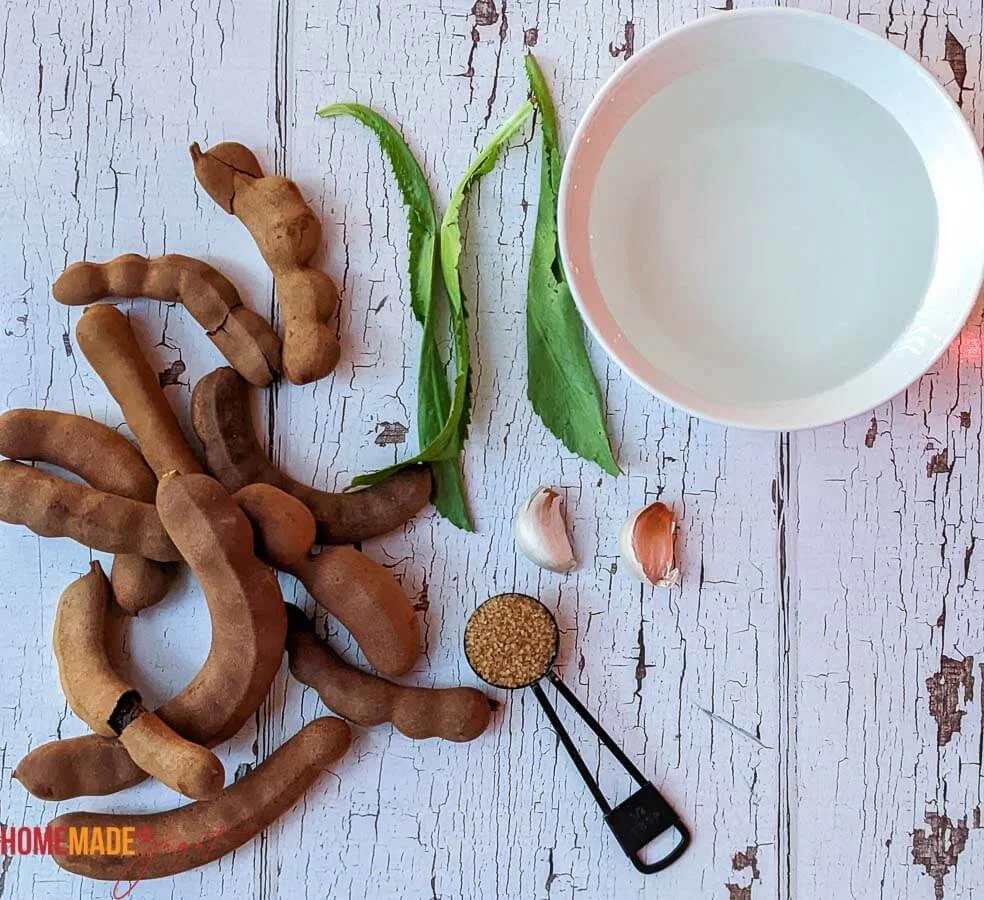
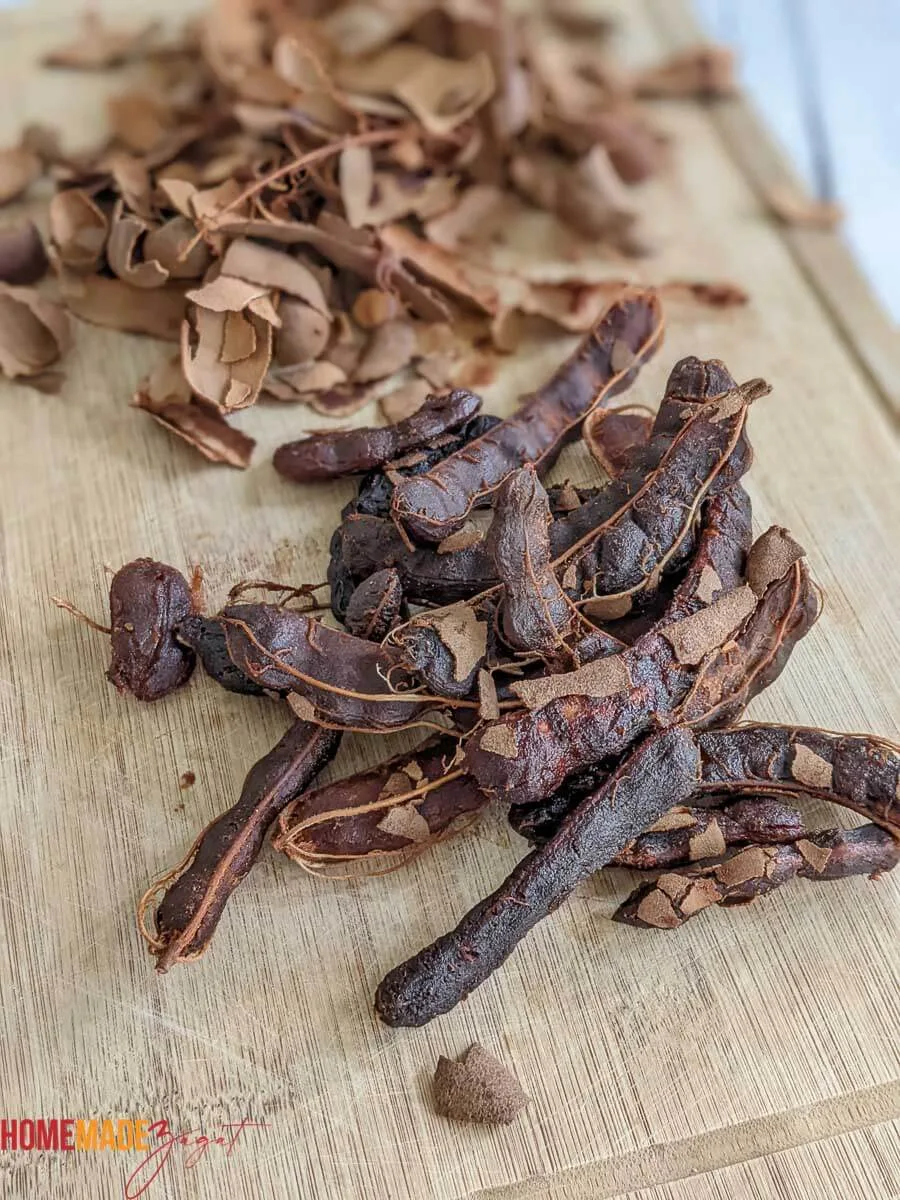

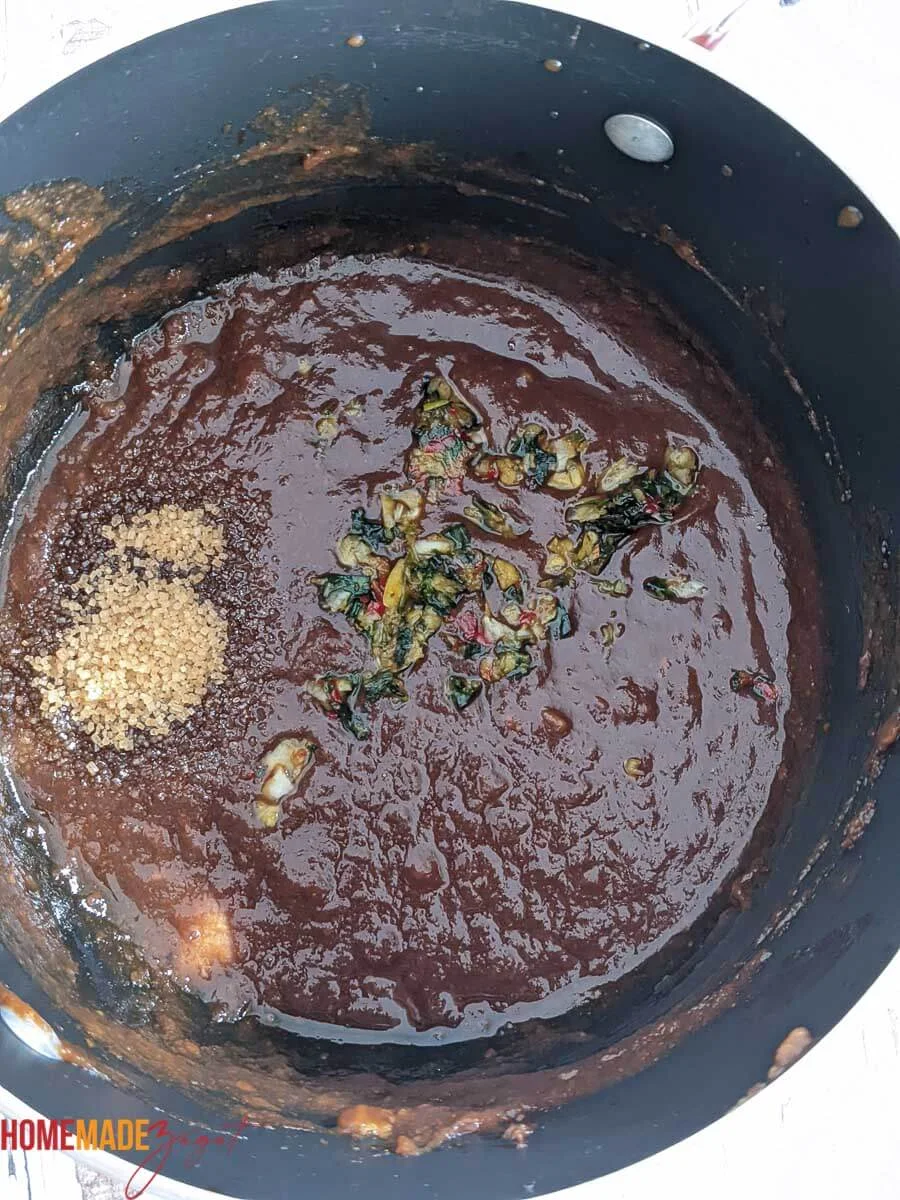
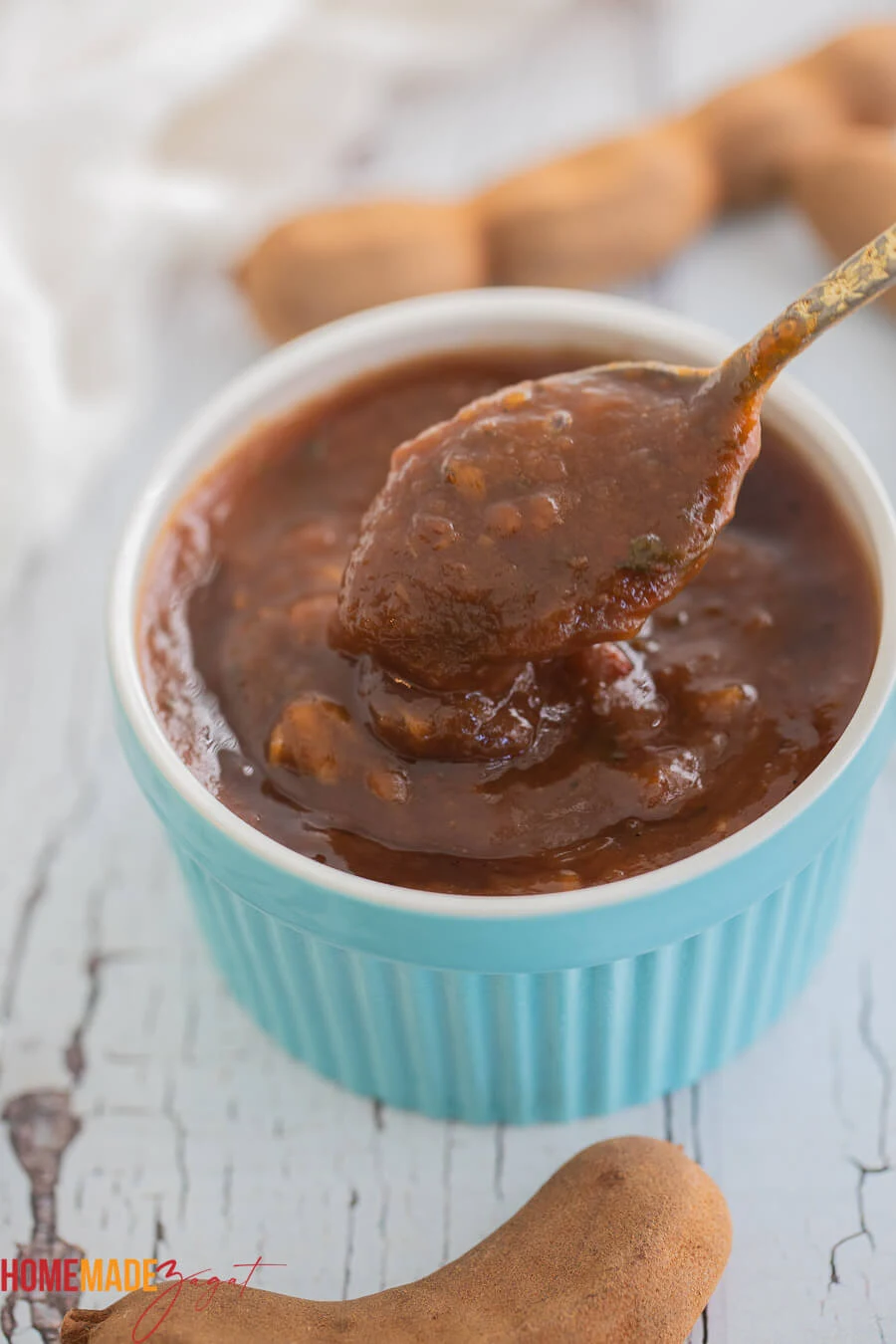
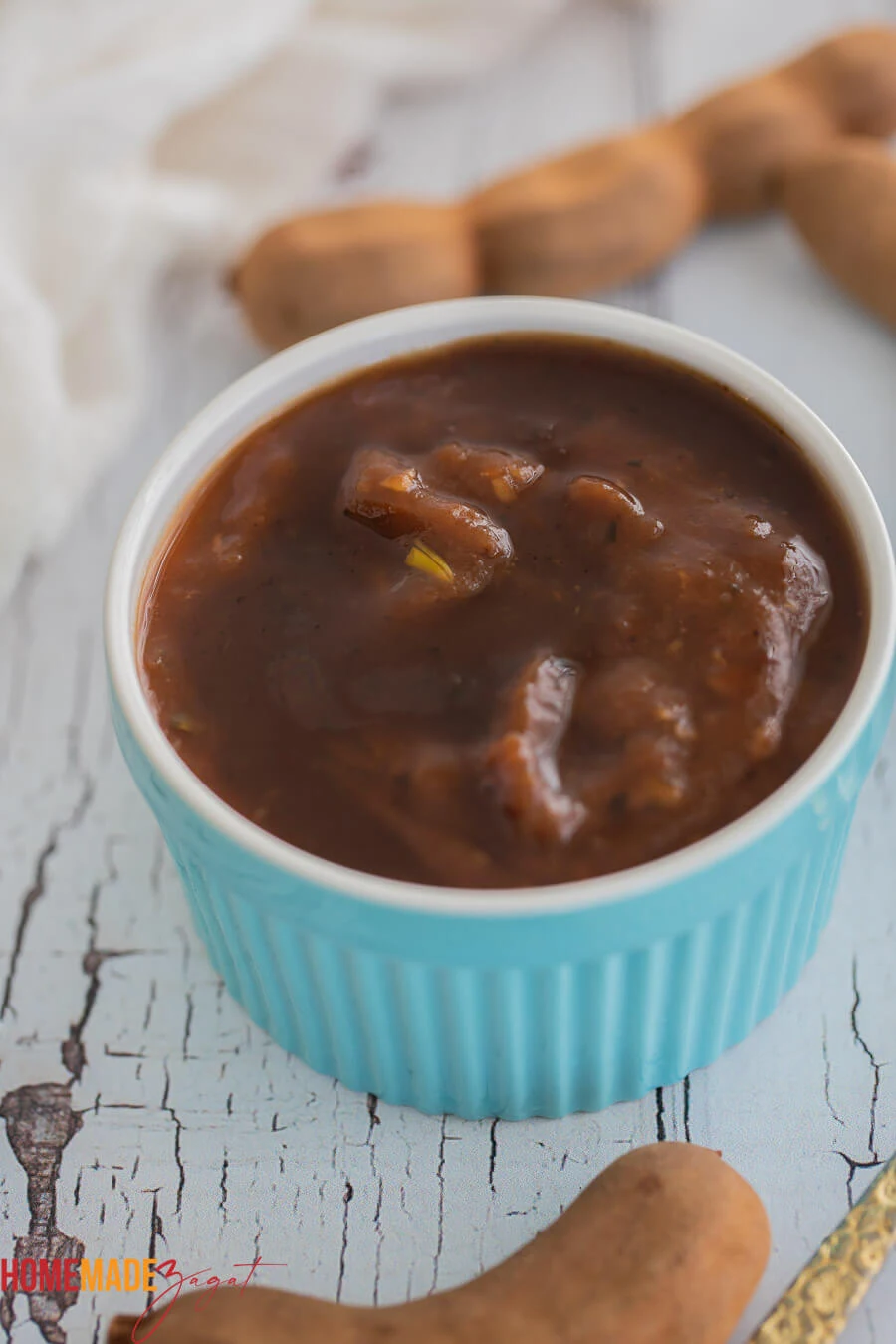
Yumm. Thank you. Can't wait to make it.
ReplyDelete